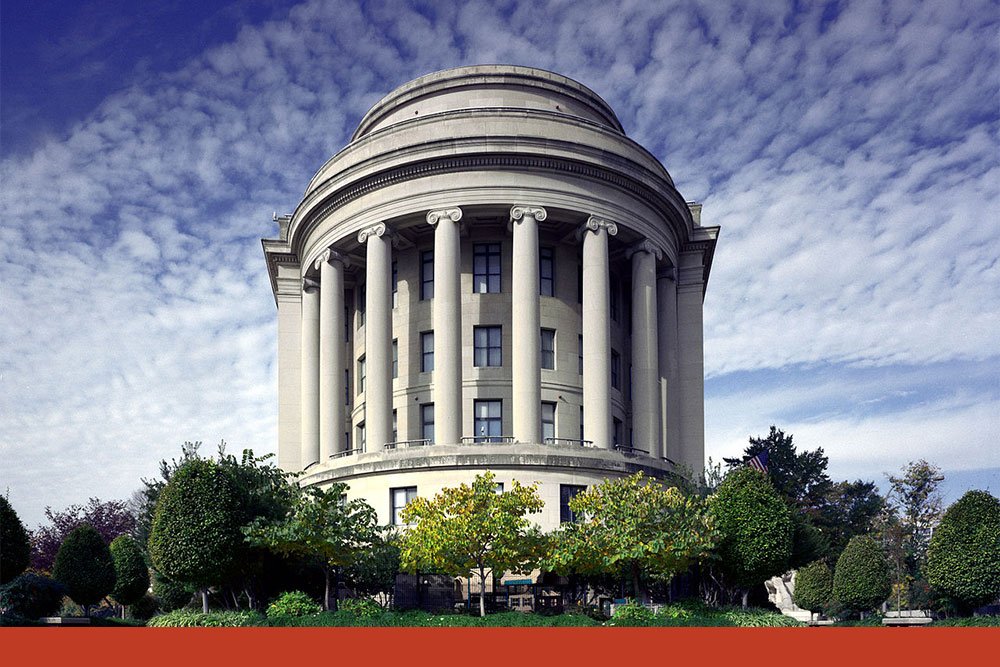Innovation and biopharma M&A: feature, not bug
By Peter Kolchinsky, PhD and Keith Murphy
Peter Kolchinsky is a founder and Managing Partner at RA Capital Management and author of The Great American Drug Deal.
Keith Murphy is the CEO and founder of Viscient Biosciences
July 28, 2022
The federal government seemingly has a message for companies considering biotech takeouts: buyer, beware… of us.
The June workshop held by the Federal Trade Commission around biopharma M&A highlighted sector consolidation and suggested raising the regulatory bar on future takeovers. It also examined how M&A may give large pharma players outsized leverage when dealing with the drug supply chain and pondered M&A’s effects on innovation.
Discussion of the latter topic tends to presuppose that the effects of M&A are generally harmful to innovation, stoking fears of so-called “Killer Acquisitions” (which are quite rare and should be stamped out). Just hosting the workshop suggests the FTC’s increasing wariness of biopharma M&A more generally - alongside the agency’s appropriately greater scrutiny of pharmaceutical benefit managers (PBMs) and vertical integration among them and insurers. If media coverage of a possible Merck/SeaGen deal is accurate, we’ve already seen a more aggressive FTC’s impact on potential dealmaking.
But the vast majority of biopharma M&A isn’t innovation-destroying. It’s innovation-driving, innovation-seeding, and innovation-funding.
It’s as if a kindhearted soul decided that rabbits should be protected from evil carnivores without an appreciation of the ecosystem within which those species sustain one another. True conservationists protect ecosystems from meddlers and invasive species, not the interplay between the organisms meant to be there.
Without the acquisitions and licensing deals that subsume biotech assets into larger pharma enterprises, thus rewarding innovators and risk-takers, the biopharma ecosystem would grind to a halt. Few new drug discovery programs would be funded, to the detriment of our industry and, ultimately, to the detriment of our health. It’s important we don’t lose sight of the forest when appropriately examining the rare anticompetitive tree.
Not every fledgling biotech company is destined to become a Regeneron, or an Amgen, or a Vertex. Some small biotechs are started and funded with the goal of selling them to larger pharmas, and some pharmas are commercial specialists that survive only by acquiring such companies. It’s an ecosystem.
Are companies that hire college graduates preventing those employees from staying in school longer, learning more, and preparing for better jobs with graduate degrees? Of course not. Some people stay in school a long time, while others start careers before they graduate high school. There are trade offs for each pathway, so what’s important is to have a marketplace of options. It’d be as foolish for the FTC to want every biotech to grow into its own commercial enterprise as wanting every college student to get a PhD or wanting every wild rabbit to die of old age.
Virtuous cycle
Biotech acquisitions cycle capital and talent through the ecosystem. They allow companies to specialize in what they do best instead of creating expensive redundancies. They free up projects and ideas that were overlooked or misunderstood within one company to be championed directly to a diverse community of funders through spinoffs. They put medicines in the hands of companies that can more efficiently develop, manufacture, and distribute them to patients.
All of these downstream effects of acquisitions directly and indirectly benefit those of us who rely on medicines to survive or to maintain our health. So, all of us, some day.
If the FTC begins to look askance at M&A between commercial-stage biopharmaceutical companies and the innovative smaller biotechs that so often are the sources of new medicines, that would be bad news for future R&D and the patients who depend on our industry for life-saving medicines. That they might do so in the name of preserving or protecting innovation in the first place would add insult to injury.
An appreciation for biopharma M&A begins with an understanding of the parts that make up our ecosystem. With apologies to the late visionary biotech banker Fred Frank, biotechs aren’t simply “pharmaceutical companies unencumbered by profits.” Nor are pharmaceutical companies simply scaled-up biotech companies. They’re fundamentally different beasts.
Small biopharma companies in particular are uniquely suited to driving US biomedical innovation, accounting for more than 70% of the nearly 3,000 drugs in Phase 3 trials, according to the CBO. These are the drug discovery and early-stage development specialists. Could they fully integrate to become commercial players? Some could, and some do.
But it’s no mean feat to build out the late-stage development capabilities, regulatory affairs expertise, manufacturing muscle, and commercial wherewithal needed to navigate the PBM gauntlet and get drugs onto insurer formularies and into the minds of prescribing doctors. Ensuring patient access is extremely capital-intensive. The transformational process is probably more akin to how a caterpillar morphs into a butterfly, with everything liquifying into a goo and having to be rebuilt until there is little recognizable of the original creature.
For each of the few biotechs that have grown into big commercial biopharmas, there are countless more that tried and failed; some tried because they were ambitious enough to believe that they could, and others tried because it was their only option after failing to attract an acquirer.
Most of the time, small biotechs don’t have the financing or the skills it would take to successfully transform into profitable standalone companies if they even tried. It would be inefficient and wasteful to try to hire in these skillsets from larger pharmaceutical companies that already house this infrastructure. M&A is therefore the natural byproduct of our industry’s efficient divisions of labor.
Acquisitions do disrupt small companies’ pipelines and teams, which sounds bad and yet it’s critical to preserving the dynamism that makes small companies special. Whenever cash is tight, and it usually is for small companies, the management team has to prioritize its best candidates, taking resources away from other programs. Time and management bandwidth is also in short supply; these companies operate more like platoons best suited to complete a single mission than an army capable of juggling parallel objectives, despite their efforts to diversify their risk and develop multiple pipeline programs at once.
Large drug companies with big commercial footprints also suffer from bureaucracy; they have often outgrown the nimbleness and existential desperation required to excel at drug discovery and early development, a phenomenon that has sparked many (largely unsuccessful) attempts at recreating biotech models within Big Pharma’s walls. And so those big companies are hungry for so-called “external innovation.” When they buy that through biotech acquisitions, risk-taking early investors, entrepreneurs, and researchers are rewarded, and talent and capital cycles back into new early-stage ideas, sometimes the very same secondary programs that previously languished in the shadow of the biotech’s favorite child.
Importantly, large companies have the benefit of economies of scale; they extract more profit from a dollar of revenue than a small company could. So whereas a small company might not be able to sustain itself selling a moderately successful drug, to a larger company that product could be added to their portfolio and generate incremental profit, making it valuable. So while the inefficient small company offers its shareholders no reward for having funded the drug’s development, an acquirer would find it more valuable and therefore offer a reward to the small company and its shareholders for having developed it.
What’s worth little in the hands of a small biotech has greater value to an acquirer, so blocking M&A reduces the value of successfully developed drugs, making R&D investment less attractive to investors.
More than meets the eye
While it’s worth the FTC’s efforts to scrutinize deals between two commercial-stage companies (particularly two large ones), even those are often innovation- and patient-friendly. One supposed poster child for the evils of biopharma M&A is Amgen’s decades-old acquisition of Immunex. Here one of us (Keith) has particular insight from helping lead the integration of those two firms, and can attest that if the FTC had blocked that merger in the name of preserving competition or supporting innovation, tens of thousands of patients would have been denied a badly needed drug that was already marketed but lacked sufficient supply due to manufacturing problems.
Amgen’s prize in the Immunex deal was Enbrel, the autoimmune disease Swiss Army knife that has become one of the most important biotech products ever. Amgen was able to acquire Immunex because the smaller company had failed to manufacture sufficient amounts of Enbrel. Their issue was a combination of underestimating patient/physician demand for the drug and failures in new manufacturing plant startup and efficiency. At the time of the deal, that demand far exceeded supply. Amgen saw that by investing in expanded manufacturing capacity and fixing the issues that hamstrung supply, the drug would be that much more valuable (and help that many more patients).
Amgen’s culture of manufacturing excellence meant it could afford to pay a premium for Immunex, knowing that Enbrel’s revenue would rise as supply met demand. It took less than two years to right the ship. If the measure of success of an acquisition is whether patients were served by it, this deal was undeniably successful.
Others have pointed to Immunex assets that were sidelined after that deal. But projects get deprioritized all the time, whether or not a merger integration drives a pipeline review. And Amgen’s post-merger R&D budget grew more quickly than either standalone company’s had previously: Two years after the deal closed, Amgen spent $1.65 billion on R&D, compared to a combined ~$1 billion in R&D spent by the two companies the year before the deal.
Still, not every decision about how to allocate scarce resources after an acquisition turns out to be correct, and so we’re not suggesting that the acquisition didn’t smother a worthy project or two, but a properly functioning market isn’t tuned to be perfect in every way… rather, it’s better than the alternatives. Consider how blocking a larger, more experienced company like Amgen from acquiring Immunex would have just left Immunex’s pipeline to struggle for funding in the shadow of its troubles producing Enbrel.
Maybe the FTC would have preferred some other arrangement. Amgen could have merely partnered with Immunex on Enbrel commercialization but left Immunex standing to invest its share of Enbrel profits into its own pipeline. That would mean that Amgen’s cash would have gone on Immunex’s balance sheet, not to Immunex shareholders. We have seen the results of many such deals, such as Lilly/Icos, AstraZeneca/Amylin, and Sanofi/Regeneron. In some cases, investors are happy to see the partner’s cash reinvested in more R&D. But in other cases, they are disappointed that they failed to get a return from partnering the best program in the portfolio, and that the cash would now be spent on lesser ideas. In some cases, shareholders agitate to cut spending on the pipeline and, when their wishes aren’t respected, they have gone activist to achieve the same result.
Since the FTC no doubt recognizes that sometimes shareholders may prefer to get a return of capital from the sale of an asset instead of spending the money on whatever is left in a company’s pipeline, then the FTC should recognize that letting Amgen acquire Immunex simply saved a step and directed Amgen’s cash to Immunex shareholders.
Killer deals are rare
To be clear, M&A shouldn’t be a vehicle to stifle innovation or competition, and the FTC and other regulators ought to be on the lookout for the rare deals designed to do so. (Researchers from Yale found this practice to be rare, thanks in part to FTC vigilance.) Deals between two larger commercial players threaten to reduce the pool of buyers and dampen the sector’s competitive tension – tension that’s important to its vibrancy. That’s worth examining.
But the acquisitions of smaller biotechs drive innovation by rewarding investors that provide capital to our space in the first place. This prompts further investment in new ideas. The FTC should avoid unnecessary reviews of deals for these pre-revenue targets that lack commercial infrastructure. Even companies in the early stages of marketing a drug may benefit from the commercial capabilities of more experienced pharmas who can accelerate patient access to needed treatments.
So while the FTC should consider the potential harms of a proposed merger – harms to competition, innovation, and patients – it should also consider the potential harms of blocking or delaying M&A. In particular, if the agency takes a hard line on the kinds of deals that spark and renew the biotech innovation cycle, those harms could reverberate well beyond any one acquisition.
Interestingly, one example of a killer acquisition was an unforced error on the FTC’s part. In 2013 Novartis sold its drug Synacthen to Questcor. The FTC inexplicably cleared the deal even though Synacthen was the only potential competitor to Questcor’s own drug Acthar, which had been on the market by that point for five decades without any competition (because it’s impossible to copy accurately enough to make a generic)!
Other companies tried to license Synacthen with the goal of competing with Questcor’s Acthar. One of us (Peter) was prepared to fund a small company in its bid to win the drug, and recalls that there was both concern that Questcor would outbid the small company and confidence that the FTC wouldn’t let that happen. And yet, despite multiple people offering testimony to the FTC about this killer acquisition, they did.
Years later, the FTC belatedly accused Questcor (now Mallinckrodt) of monopolistic behavior in its failure to develop Synacthen. Really? One just had to look at the two drugs, see they were nearly the same, treated the same conditions, and that there was nothing else in the drug landscape even remotely like them to know that this is how things would play out.
Compare that to Amgen/Immunex and even Merck/Seagen. These are cases of complementarity. Amgen didn’t have any drugs like Enbrel. Merck and SeaGen each have oncology drugs, but Merck has none like Seagen’s antibody drug conjugates (ADCs) (Merck’s immuno-oncology drugs are more likely to be used in conjunction with or sequentially with Seagen’s drugs). Besides, there are many other companies working on ADCs and many other pharmas that would be interested in adding those tools to their toolkits to compete with Merck if Merck buys Seagen.
These deals are not about killing competition any more than if there were a town in which plumbers only had wrenches or only had pliers, and one of the wrench plumbers decided to acquire a pair of pliers. That would make that plumber more effective, for sure, but it wouldn’t stop all the others from expanding their toolkit to similarly offer their customers a better chance of solving their plumbing problems.
Of course not every deal is as clear cut as the examples above, until you examine the nuances. In 2015, Shire (itself now part of Takeda) said it would acquire Dyax. At the time, Shire manufactured and sold Cinryze, a drug to prevent hereditary angioedema (HAE) attacks. It was an awkward drug that required frequent infusions. Dyax was a small biotech developing a long-acting antibody meant to be superior to Cinryze in every way. It would be injected subcutaneously, not by infusion. It would be given twice a month, not twice a week. It would be more effective. Once Dyax’s drug launched, every expectation was that it would result in Cinryze’s demise. In other words, whether Shire was allowed to acquire Dyax or not, there would be only one drug for HAE after Dyax’s drug launched – and it wasn’t going to be Cinryze.
In that context, the decision isn’t difficult. But what if the FTC didn’t consider how inferior Cinryze was to Dyax’s antibody? What if they assumed Shire wanted to buy Dyax only to kill its drug and protect Cinryze? That would be absurdly illogical, given Dyax’s drug’s superiority and how many more patients would be willing to take it given its convenience and efficacy. Without the deal, Dyax might have had to build its own commercial capabilities, reducing and delaying a return on investment for shareholders, maybe even slowing access to the better drug for patients. In other words, there would have been a worse outcome.
The FTC’s ability to regulate the competitiveness of the market is a powerful and necessary check on the worst instincts of the purely free markets. However, if that power is wielded by those with an academic or lay understanding of an industry, it can cause tremendous harm to what would otherwise be a vibrant, competitive, and productive ecosystem.
Please click here for important RA Capital disclosures.






